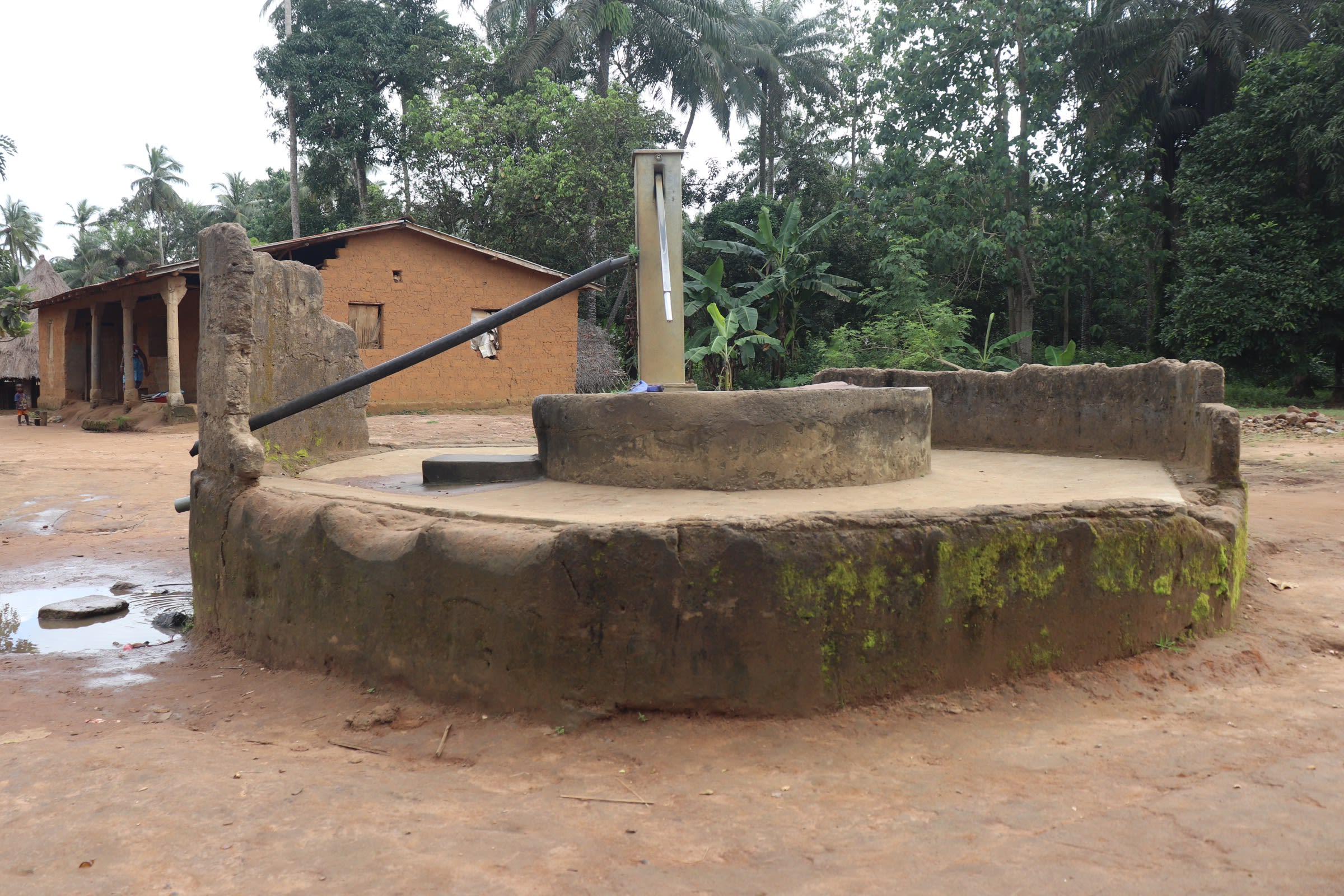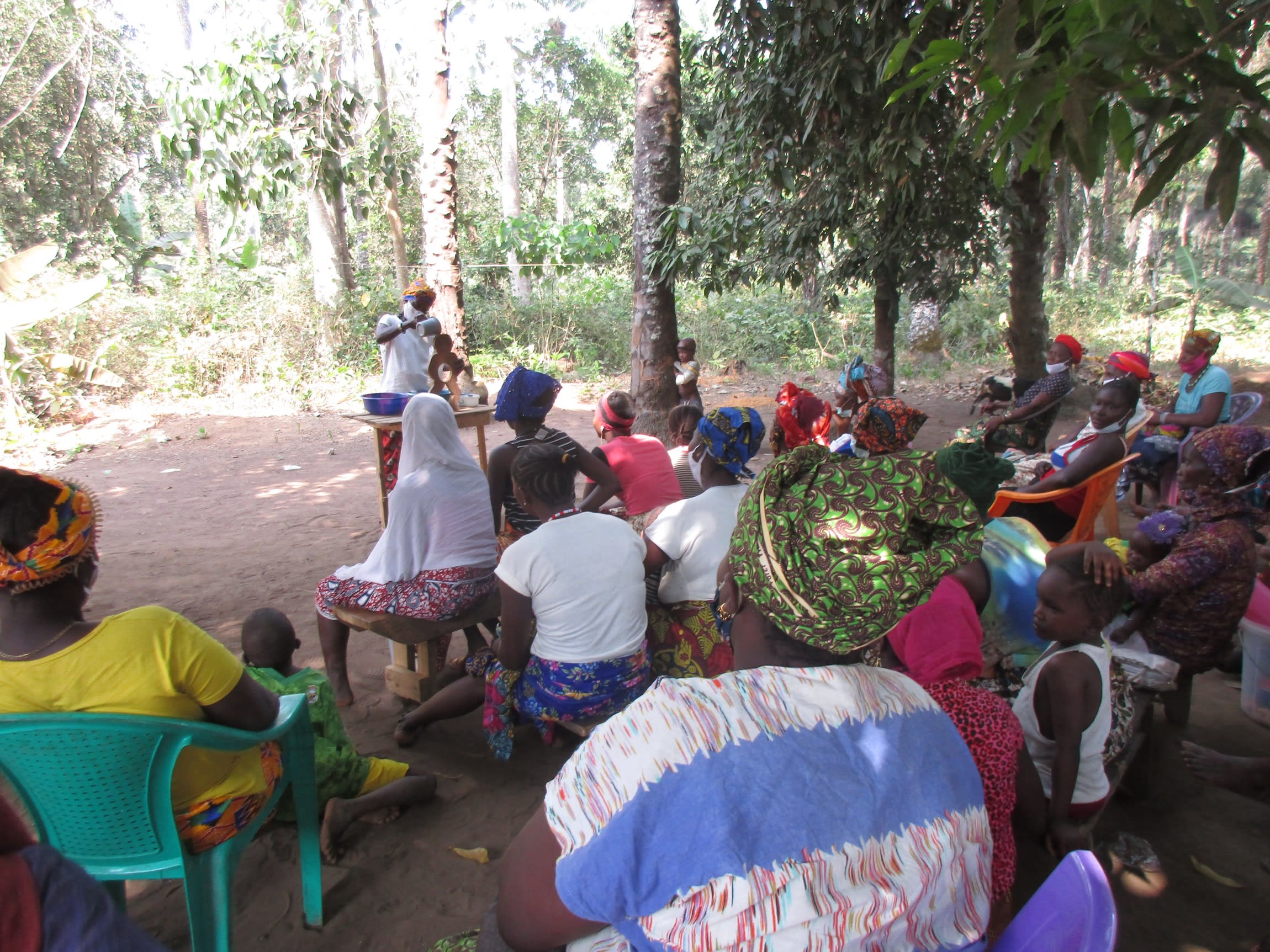Santiguiya's 366 people spend more time looking for water than doing anything else.
Their main water source is a protected dug well with a hand-pump, which can't provide water throughout the year. The water level lowers early in the dry season and then dries out completely from March to May. The wall around the well is broken, which leaves it open for animals like goats, sheep, or dogs to defecate around the area.

Even so, the well is constantly overcrowded. The little water that the well does have can't serve everyone. This has always been frustrating.
There are two other wells within the community: one has a faulty hand-pump that is almost always broken, and the third is owned by the local mosque, which restricts water access at certain hours. During the dry season, people could be at a well struggling to fetch water until late in the evening. This means a person could walk around an entire community for over an hour and still return home with an empty bucket.
"In the dry season, all the wells in this community get dry," said 27-year-old trader Safiatu Bangura. "The only hope for safe drinking water is the borehole next to the Mosque. Our chances of fetching water at that source are limited. There has always been a high demand for water."
"It is frustrating to me when I end up not fortunate to fetch water after long waiting in the queue," Safiatu continued. "I am a petty trader who makes local soap and sells it in the surrounding villages. This is my only means of getting money to take care of my family, but it is difficult sometimes to fetch water to make soap. The water crisis postpones my trade, mostly at the time customers demand my product. It is a great loss on my business."
15-year-old Abdul K. doesn't have a trade yet, but he still doesn't eat when he can't get water. "I become angry at the well when I am struggling to fetch water with an empty stomach, but I have to do it because my mother will not give me food if I refuse to fetch water for her to cook and for other activities at home."
"When I carry water, I feel my head aching until my mother gives me a drug to stop the pain. Then I start fetching water again," Abdul said.
Here’s what we’re going to do about it:
Well Rehabilitation
The well marked for this overhaul is dry for a few months every year and needs major work to supply adequate, clean water to the community year round. The pump will be removed, and a hand auger will be lowered inside and powered by a drill team. This hand auger will allow the team to drill several meters deeper to hit a sufficient water column that will ensure the well supplies water throughout all seasons.
As the team drills, casing will be installed, transforming the bottom of this hand-dug well into a borehole. PVC piping will connect this lower system directly to the pump, a construction that we know will also improve the quality of water.
Once this plan is implemented, everyone within the community will have access to safe drinking water in both quality and quantity, even through the dry months.
Hygiene and Sanitation Training
There will be hygiene and sanitation training sessions offered for three days in a row.
After our visit, the hygiene and sanitation trainer decided it would be best to teach community members how to build a tippy tap (a hand-washing station built with a jerrycan, string, and sticks). They will use these tippy taps for handwashing demonstrations, and will also teach about other tools like dish racks and the importance of properly penning in animals.
These trainings will also strengthen the water user committee that manages and maintains this well. They enforce proper behavior and report to us whenever they need our help solving a serious problem, like a pump breakdown.

 Borehole Well and Hand Pump
Borehole Well and Hand Pump
































